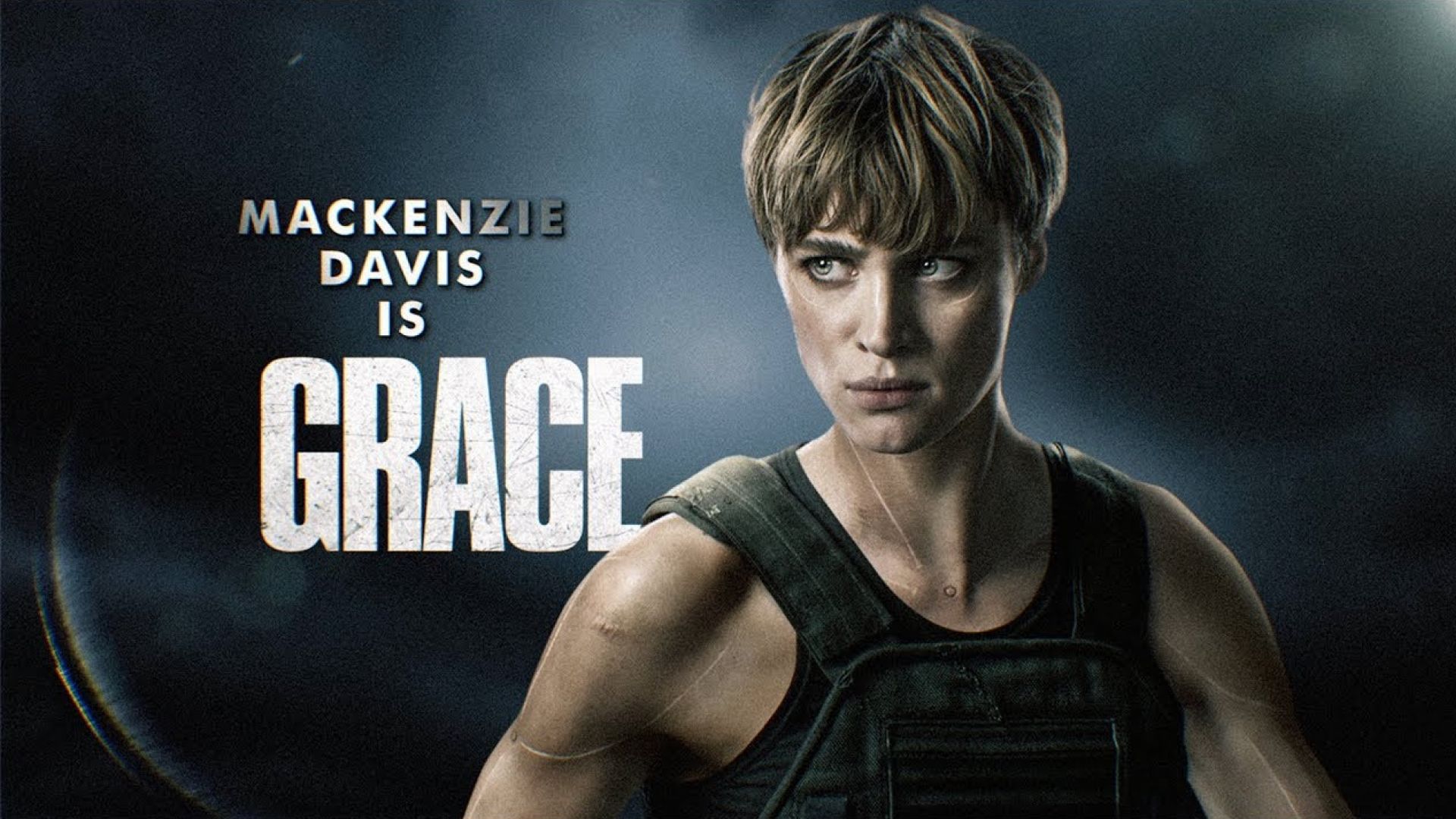
By Emad El-Din Aysha, PhD
“It is very true that one cannot always go by the principles of Marxism in deciding whether to reject or to accept a work of art. A work of art should, in the first place, be judged by its own law, that is, by the law of art. But Marxism alone can explain why and how a given tendency in art has originated in a given period of history; in other words, who it was who made a demand for such a[n] artistic form and not for another, and why.”
--- Leon Trotsky
“The place of the father in the modern suburban family is a very small one, particularly if he plays golf.”
--- Bertrand Russell
I’ve been avoiding the task of reviewing Terminator: Dark Fate for way too long as a fan of the original 1984 movie. I have a truck load of misgivings about the movie, artistically and politically, but it was entertaining and was trying to poke fun of Trump’s America and, better still, it starred a female heroine named Grace, played to perfection by Mackenzie Davis.
I’d only watched her in two movies before, The Martian and Blade Runner 2049[1], and I was positively bamboozled to find it was the same person. Shortly after that I became a fan, finding her to be the most insatiably girlish actress since Anne Hathaway but with the same psychotic edge as Julianne Moore. And she has her own distinct sense of beauty to boot since doesn’t look remotely like either of them. Looking around further I found she was even more in depth than I suspected, which is when I stumbled on an interview of hers talking about Dark Fate and the near absence the ‘male gaze’ in the movie. She explained how the construction of her character was especially cool because it cunningly avoided the superhero feminine ideal often forced onto actresses, leaving you with a heroine who was too polished and pristine to be true. Until this movie only Charlize Theron had weathered the post-apocalyptic storm in Mad Max: Fury Road (2015),[2] going up against a (in my interpretation) hydraulic despot like Pharaoh with suicide fanatic soldiers at his disposal for the post-9/11 era. In the process the issue of male gaze was raised, along with the fact that the movie was female-dominated and seems to have a queer subtext.[3]
I’ve been out of the loop in the world of artistic and literary criticism, since the turn of the century to be honest, but fortunately I’d had a chance encounter once at that turn of the century with an art student working on a similar topic for her PhD. So, thought I’d give it a try and pick apart the notion of male gaze, for and against, and hopefully make an original contribution along the way while reviewing Dark Fate… and everybody in it!
From Tackiness to Trump’s America
Let’s talk about Terminator: Dark Fate, gaze or no gays. It is certainly entertaining and significantly better than that pointless travesty Terminator Genysis was although not ‘quite’ as good as Terminator Salvation, with all the problems that besotted that pic. The future war sequence was very impressive too, a fresh look at a hackneyed theme I’m glad to say, and I caught onto the couched reference to ‘drones’ in it. Tim Miller certainly has lots of untapped potential. The real highpoint again was the female resistance fighter, Grace, who is sent back in time to save a completely new person, a Mexican girl named Dani Ramos (Natalia Reyes), from a completely different model of terminator sent by a future not dominated by Skynet. The story, interestingly, begins in Mexico and only later moves on to the US, with all Trump’s armed to the teeth anti-immigration restrictions. Actionwise it’s impressive, as you would expect, but CGI is just too easy and it makes you lazy to the point of ignoring such eventualities as gravity, a problem they didn’t have with the original stopframe animation in the first movie.
In terms of direction and storytelling it’s okay but it suffers from the classic problems of sequels, namely, overkill, with too many characters and subplots and themes. The sci-fi aspect of it, likewise, was a mess. You have this mindboggling scenario where Arnold goes backwards in time and successfully kills John Conner, even though the future world he came from no longer exists thanks to John Conner, only for a brand new terminator to be sent backwards in time and by a completely new AI-system called Legion. The bad guy terminator (Gabriel Luna) concept was cool, a kind of split personality robot with liquid metal skin that can operate by itself, but there’s still no substitute for the T-1000 good guy cop authority figure played by Robert Patrick. Also the EMP scene with the passenger plane crashing is reminiscent of similar EMP crash scene in The 5th Wave (2016). In all fairness even James Cameron copies things from Harlan Ellison and also messed up in the very first sequel and on multiple counts – messing up the original time paradox, messing up how the time machine works (through living tissue) and bequeathing us a nice guy terminator for the 1990s. (Here Arnold is a self-programmed domesticated househusband). Every time they do it, a sequel, it gets lamer and lamer. Trashing Trump is fine by me[4] but it’s all a question of sincerity and substantiveness, not just a desperate searching out of contemporary themes to make the movie relevant and tap into a mass market out there.
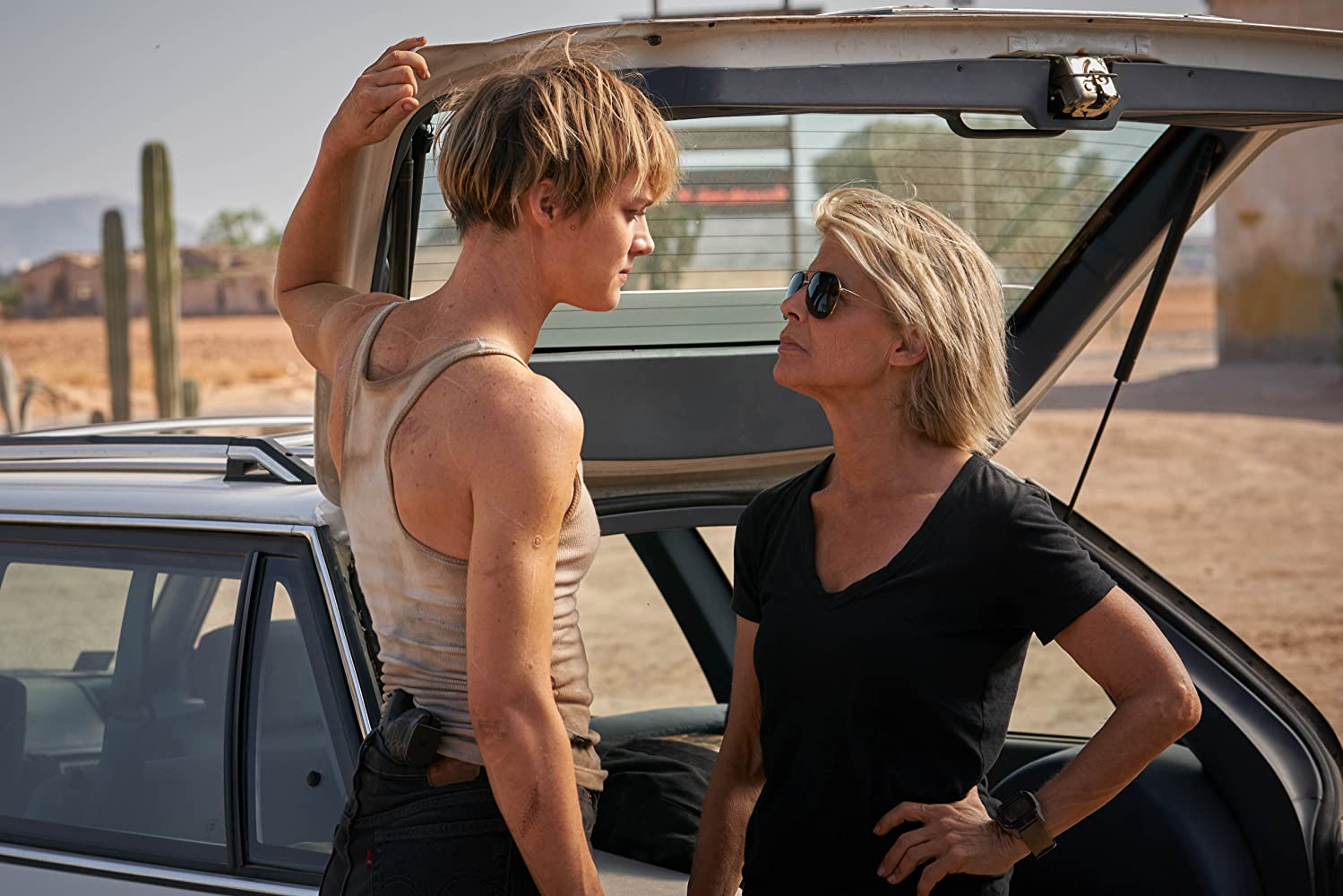
Grace, admittedly, is a very Catholic sounding name and you have Dani Ramos’s brother who is learning to become a good American and you have Arnold being an interior decorator taking care of a migrant woman and her child, with Dani Ramos being the heroic leader of the future resistance herself and not the mother ‘of’ the future leader hero. The gender angle wasn’t completely evident to me at first because I’d grown up in the 1980s with the original movie, with one of the first onscreen sci-fi heroines, Sarah Conner (Linda Hamilton), hot on the heels of Sigourney Weaver in Alien (1979) – James Cameron actually took Ripley as his model. Here Sarah Conner was almost unrecognisable. It’s great to see Linda Hamilton after all these years and see she’s in good shape but she’s not the maternal and romantic Sarah Conner of the past who still needs Kyle Reese to sustain her through hard times and make her a hero; by his faith in her, even if just as a memory. The people responsible for the first movie wanted someone who transcended the SF genre, someone who ‘looks’ like a victim but ultimately isn’t. Remember that when she finally toughens up in the first movie, she saves him on more than one occasion and finally defeats the robot all by herself. The beauty of her character, in the second movie, was how she combined her tough as nails demeanour with her femininity, hence the scene where she breaks down and cries when she’s about to kill Miles Dyson (Joe Morton), the Cyberdine engineer responsible for Skynet, while facing his wife and kids.
Kudos to Mackenzie Davis. I couldn’t help but notice how she doesn’t ape any lines from the original movies, such as ‘come with me if you want to live’ or ‘what year is this’, so the character was fresh and original. (Both Arnold and Sarah Conner do, over and over again). Her hairstyle, lips, dimple and eyeliner also humanised her and made her cute and vulnerable – including that temper tantrum scene at the pharmacy – as well as physically formidable and attractive.[5] The only near equivalent I can think of in sci-fi history is Blair Brown in Altered States (1980), who also famously played the sexily vulnerable Jackie Kennedy. And you hated it when Grace had to kill herself in the end to beat the new model terminator. Natalia Reyes was okay and the morality debates she had were nice and very appropriate, refusing to become ruthless and sacrifice people in a modern day world that already is based on discarding the expendable. Nonetheless this is evidence that the moviemakers don’t understand Mexicans and how hardnosed their mothers are. Mexican moms, even housewives, fight for their kids against insurmountable odds – corruption and crime and many a bigoted man – so there’s no contradiction between being a mom and an ass kicking babe. Check out Dolores Heredia’s character in Get the Gringo (2012), to see exactly what I mean. The moviemakers gave an Americanised version of the feminist hero and for all the wrong reasons.
I’d queried Fatima Bhutto on Terminator: Dark Fate because it seemed to waylay with her comments on the declining fates of American soft power, thanks to the very globalisation that’s supposed to perpetuate it.[6] She explained that Turkish soap operas were winning the soft power wars because dislocated rural migrants in the south, or those headed north, felt that stories about struggling families and girls maintaining their honour represented them and their collective plight far more than series like Sex & the City, about self-indulgent privileged suburbanites. That reminded me straight away of that struggling family that Dani Ramos belongs to – ‘Dani’, sounds like an Irish name, doesn’t it? Fatima Bhutto’s answer was that the movie was a tactical retreat of sorts, an example of Hollywood hoping onto the bandwagon in a world where South Koreans and Iranians were getting Oscars and other international awards for their path-breaking movies, whereas Hollywood was running out of ideas and doing lame reruns like Little Women.
So we’re back in the Terminator 3: Rise of the Machines (2003) mode, with Arnold pandering to the female Californian voters with the strip club scene and the pet clinic neutering scene and the God Bless America scene and the preference for John Conner’s future wife over (the pipsqueak) John Conner himself. Dark Fate fares a ‘little’ better in this regard. D.H. Lawrence always said you should trust the novel and not the novelist. Despite my misgivings about the movie I’d say something like that happened with Grace’s sacrifice in the end. Queer subtext or not I genuinely believe this decision was driven by Grace’s loyalty and love to Dani, as a soldier and a kid who was rescued by her. Kyle Reese travelled back in time out of love for Sarah Conner, true enough, but that was something he hid the whole time out of his professionalism as a soldier with a mission to fulfil. It was only at a moment of weakness, seeing the end coming, that he let his guard down. The only catch was Arnold’s own sacrifice after Grace’s which kind of ruined it!
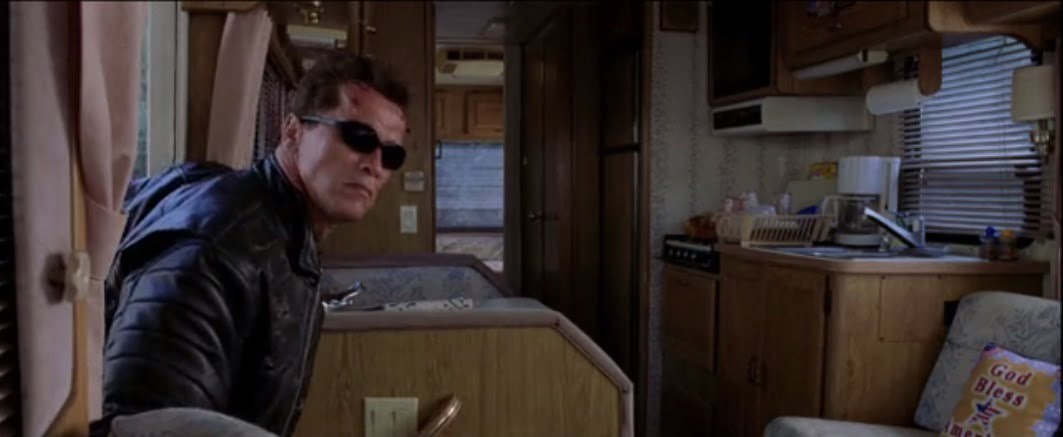
Arnold saves the world by both rescuing Sarah Conner and then completing what Grace had tried to do with the EMP device, the only thing that can kill the new brand of terminator. When he does kill the new terminator he says those immortal words, ‘for John’, referring to John Conner, reasserting the guy’s heroic status as the JC (Jesus Christ) saviour of the world. (John Cole in 12 Monkeys has the same initials). I would presume that this happened because they had to find something for Arnold to do, asides from comic relief. He is the token male after all – the bad guy terminator was a guy too, although a female terminator would have been way cooler and more challenging, like in T3. I’m also suspicious of the queer subtext, portraying manly women as the true protectors of the nation, much like African American gangbangers are portrayed as the true patriots in Rising Sun (1993), with the country being sold out to the Japanese corporate conspirators by the whitefolks – I’m citing BBC film critic Barry Norman on this. Lots of minorities get panned by other minorities in American cinema, I’m sad to say, and you feel that some corporate exec is cackling to himself in the background behind the backs of the directors, scriptwriters and actors.
Dark Fate clearly had too many writers, and too many agendas and (male) egos to placate. I would have stuck with Grace, personally, and sod the lot of them!!
Levels of Misanalysis and Misdirection
I’m terribly behind the times on cinematic theory but it seems that the term male gaze was coined by feminist theory and specifically from the writings of Laura Mulvey: “In feminist theory, the male gaze is the act of depicting women and the world, in the visual arts and in literature, from a masculine, heterosexual perspective that presents and represents women as sexual objects for the pleasure of the male viewer.”

I wholeheartedly endorse this view, especially when comes to trashy commercialism on TV and voyeuristic painting, but you still have to wonder if this is a European peculiarity, just like the association of goats with devil worship and paganism. Would it apply to non-representational art traditions, I wonder, such as in Islam and traditional African art? The male gaze view was originally premised on classical European painting with women flaunting their desirable parts to the expectant male onlooker. We could add that the concept is also intimately tied with the crass materialism of industrial capitalism and the imperialist confrontation with the South via the white man’s burden and the East via Orientalism. The full extent of the applicability of this theory to cinema is also an issue because there’s a world of difference between the male gaze of the director and that of the male characters within the work, and it could very well be the director is condemning their chauvinistic views of women. In David Cronenberg’s Eastern Promises (2007), for instance, there is a degrading doggy-style sex scene with a prostitute being ravished like a piece of meat by Russian gangsters. There’s positively no enjoyment on our part of this unpleasant scene and as soon as its’ over, you see the girl on the bed, with all her naughty bits covered in a somewhat forced way, but it’s the right thing to do because the sex scene has served its purpose and there’s no need to degrade her any more. No male gaze here, except those of the bad guys, which is a lot more than I can say for the downright diseased gaze of Bertolucci in The Sheltering Sky, The Last Emperor, The Dreamers and Last Tango in Paris. (There’s a nude scene in The Dreamers near identical to a famous nude painting and an underwear scene near identical to what you get amateurish porn stories!)
Watch sci-fi classic Soylent Green and you will find that the women assigned to rich men are called ‘furniture’. But is this the opinion of the present day men who made the movie, or the future world men in the movie? Another key scene in a movie that also been signalled out for criticism by feminists is the sequence in Alien when Ripley is up against the creature in the Narcissus escape pod, and she looks weak and scared in her underwear. What the critics didn’t realise is that it was Sigourney Weaver who came up with the chain of events in that scene, including her semi-nudity and the sexual allusions of the creature’s second mouth. Male gaze, then, is a necessary concept that illuminates problems we aren’t aware of but is also an approximation. It applies to varying degrees from culture to culture, time period to time period, and across different genres.
Finally, there’s no inevitability about it since every work of art is a little universe in its own right with its own erratic evolutionary path. One of the boons of making a movie compared to writing a novel is that it’s a collective effort. Something can start out as a marketing ploy and turn serious if you have a professional in charge, the director or producer, and have actors and scriptwriters who have a strong sense of responsibility both as artists and people. The cast of Alien actually saved the movie when they saw Ridley Scott getting caught up with struggles with the producers and if it hadn’t been for Rutger Hauer, Harrison Ford would have single-handedly sunk Blade Runner. (He was jealous of Sean Young, apparently. What a Big Girl’s Blouse!)
Same goes for Dark Fate, I’m glad to say. To cite Mackenzie Davis again she explained that an actress needs to express her own point of view about how believable the character is and how she interacts with others, along with avoiding clichéd tropes and sexually exploitative roles. She encountered this way in the beginning of her career in fact – won’t give you the yucky details – and she made it clear from early on that she wouldn’t go along with such sordid male fantasies: “I never want to play someone’s fucking joke. I never really wanna play someone’s girlfriend, and I never really want to play somebody that’s observing somebody else have a story. I don’t need to be the lead of the story, but I know that I don’t just want to be an actress. I want a particular version of a career…” (Vulture interview). She was also right to avoid going to the opposite extreme and having an overly butch character where the woman is turned into a man, in a post-apocalyptic setting, and becomes completely unpretty and defeminised – as if women can’t fight back and be women at the same time. (Charlize Theron again). Kudus also to the director, Tim Miller, for walking that tightrope of equal temptations, which is more than I can say for Hollywood most of the time.
Now to make my little contribution, in light of that chance encounter with the PhD student. All of the above focuses on the ‘content’ of a work of art, the themes and motifs (or tropes) explored and utilised. But what about form? This is the bigger issue, in my humble opinion – perspective. Perspective determines your ‘access’ to the content on display and so how you relate to it and judge it, and so perspective itself is content rich. How you chose to present something enters into how a work is interpreted, visual or textual. Moreover, how you chose to present something tells us something about you, what you choose to highlight or hide, and so how professional or unprofessional you are. The classic example used by Rudolf Arnheim in Film as Art (1932) is a cube.[7] If you photograph it or draw it on a table, from a horizontal perspective, the person looking at the image wouldn’t know that it’s a three dimensional cube but think it was just a square (pp. 8-10). He may even be tricked into thinking it’s a tea or coffee mug, but looked at from a flat horizontal perspective.
Same goes for cinematography. What kind of camerawork do men find comforting and why and is this biased-prejudiced in any way? Hence, the male gaze. This is our real quarry. The male gaze is a controlling gaze, a dominating gaze, an objectifying gaze that turns women into sexual objects or subsumes them seamlessly into the ‘landscaped’ background.
I say because of that PhD student explained that her thesis was about perspective and landscaping and framing and having the female body or persona in the corner of a picture. Lo and behold, and I told this to her, I had a desktop saver of some beautiful actress on my laptop at home with her to the edge in a framed image. Us men are very controlling in the way we think and look at things so she’d definitely caught onto something there. Afterwards I realised that this was characteristic of Stanley Kubrik’s style of cinematography and movie direction, someone who was known for not getting along with people least of all actresses. Everything is spaced out, at a distance, squeaky clean and cold and sanitised. This is most evident, of course, in 2001: A Space Odyssey and The Shinning, and its’ not a coincidence that the roles of the female characters in those movies were problematic at best. Reportedly Kubrik didn’t get along well with Shelley Duvall and you can ‘see’ how much he identified with Jack Nicholson’s character in The Shinning, let alone the fact that the women in the year 2001 are consigned to the role of mere stewardess and housewives.
Men certainly associate women with landscapes in works of art, just as they associate them with cars and horses, along with the national flag and notions of the motherland and man as the national protector. Now juxtapose this to a feminist director like Kathryn Bigelow, taking her movie Blue Steel (1990) as an example of the female gaze, you could say. Watch it and you find a constant emphasis on close-ups, especially of skin and faces and facial expressions and other bodily ornaments. Even inanimate objects look ‘organic’, as if they’re sweating and glistening in the moonlight. Women, it seems, are more comfortable with close-ups and eye contact, while we are too objective for our own good. (Women are certainly better at discerning different shades of beige, pink and purple and blue. They all look the same to me, even with the reading glasses on). Working in journalism you get told repeatedly, by men, that the best photojournalists are women. They like close-up photography. Whenever I take a photo I instinctively move away as much as possible to squeeze as much into the frame, as is possible.
This is the wrong way to go, I’ve learned over the years. Being a factual maximalist tricks you into thinking you are objective. But, ultimately, what you’re photographing is people and their impressions, so you do actually need to do a close up to see their eyes and highlight their facial expressions. There’s no need to be objective. Being subjective is the way to go, the ultimate in objectivity when you’re dealing with people. As for Kubrick, the performances of lesser characters in those two movies, especially The Shinning, also have this docudrama quality to them. It’s so uninvolving and devoid of emotion, and that’s the key variable in this equation. Men, a great deal of them at any rate, are uncomfortable with close ups because its’ emotionally engaging. It’s not so much control, as the art student surmised, although that is definitely there. In my humble opinion its ‘insecurity’.[8]
Here’s a cinematic illustration of my thesis, that wonderful movie The Martian Child (2007). The boy, growing up as an abandoned baby, convinces himself he’s an extraterrestrial sent to earth to compile a report. He busies himself making notes, photographing things with a Polaroid camera, taking samples and – get this – keeps looking at things, such as household objects, as if he’s never seen them before. And that means holding them at arm’s length and moving them around in his hand to get a look from multiple angles. Wouldn’t you know it, I do that on occasion, at home, when I feel vulnerable or boxed in. I go into a scientific mode and look at things in such a fashion. The boy in the movie is trying to stand outside of himself, forget himself and the fact that he was rejected, through such so-called objective postures. Closely related to this, at the level of photography is the practice of ‘telescoping’. I watched an interview of John le Carré once and he talked about how he went into war zones to take notes, literally in the middle of fire fights, and he withstood the tension and fear by telescoping himself out of the picture. Again, this is something I have found myself doing on occasion when I’m walking the already alien streets of Cairo and am stuck or can’t find a place because the address is bogus or am late because of bureaucratic stupidity, or the noise and pollution and overcrowdedness and chaos gets to me. One common reaction in these situations, amply documented, is contagion fears which often accompany culture shock. (Happens to me too). The other, more subtle, is to look around, at buildings, above the chaotic street level and imagine this is the first time you’ve been to this street.
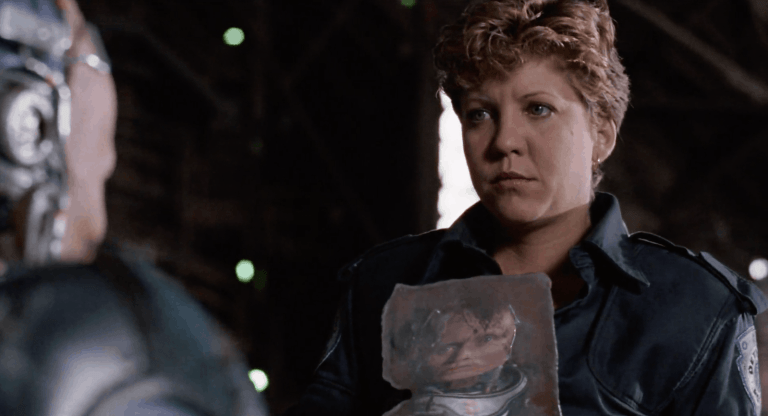
Masculinity is a big part of this objectivity cult but admittedly so is culture. Something I’ve noticed about the English, men and women, is that they aren’t comfortable with sex, in literature or cinema, and not for any moralistic reasons but because they find it ‘distracting’. No Frenchman, Italian or Spaniard would ever say something like. To them sex is what it’s all about. Hence, a novel and movie like Emmanuelle, and that work has its own perverse species of objectivity. If you listen to the audio-commentary for the final cut of Blade Runner, and watch the documentary Dangerous Days, you will find that there was a sex scene that was edited out between Deckard and Rachel and Ridley Scott axed it because he found it – yep – distracting.
I would have kept it in because it’s meant, I presume, to signify Rachel’s maturation as a woman making her own decisions about sex and love and relationships. Hence the piano playing scene where she lets her hair down. Plus, its’ Sean Young, and who wouldn’t want to see her doing it, philosophy or no philosophy!
Charity is the Way to Go
We can even take this a step farther and say that the controlling gaze in 2001 and The Shinning itself may be derivative of insecurity, this misplaced notion us men have that nature has to be controlled or else it will turn on you. I’d still wager this is more capitalism and materialism than a masculine thing as such but men are certainly interested in understanding and tabulating things to control them better. To know is to dominate, as Francis Bacon presumed incorrectly, living as he did in the world prior to quantum mechanics. And men often don’t feel so secure if they can’t fathom the nature of motivation, not least female motivation which is always an unfathomable ‘dark continent’, as Freud famously put it, if looked at from a male-centred perspective.
Personally I prefer a balanced approach to cinematography, with perspective shots when they’re called for and close-ups as need be. Men tend too much in one direction while women push in the other, with a tiny handful of geniuses who can balance the two in between. At least in the Anglo-American tradition of moviemaking. Some of the best directors to walk this razor’s edge of too big and too small are Jordan Scott in Cracks and Sophie Takal in Always Shine (2016), along with Kathryn Bigelow in Strange Days (1995), and maybe Luc Besson in Léon: The Professional (1994). Ridley Scott’s older movies, Alien and Blade Runner, are also worth special mention not just because of balanced cinematography and personal narratives and confined spaces, but because he uses the full cinematic toolkit to immerse you into the goings on of the movie, up close and personal through creepy sound effects and lighting and shading and music. This is a balancing act itself, sucking you into the picture that itself is a perspective shot. (Cronenberg is good in that department too with his haunting soundtracks and tasteful understanding of gore). What is more, despite SF’s bad reputation in the male gaze department, there are works of SF that blast it out of the water, such as Altered States. Visually it’s very similar to Stanley Kubrick but has ‘plenty’ of close-ups and is very visceral and involving and, most of all, has wondrous dialogue between Will Hurt and Blair Brown on the differences between men and women when it comes to answering all those ultimate questions about the meaning of life and coping with uncertainty. The female perspective wins out in the end and it helps return Will Hurt to normal again, grounded in the ‘mundane’ reality he tried to escape previously because he found it so suffocating.
Consequently, there are endless opportunities to redeem yourself and amazingly enough Stanley Kubrick is a supreme example of this. He did this with his last movie Eyes Wide Shut (1999). It’s filmed in exactly the same way as his other epics mentioned above but, nonetheless, it’s very, very female-centric. This is all the more amazing given that the protagonist in it is technically a man, Tom Cruise, and his journey into the sex crazed underworld where men of privilege and power can have anything they want. And yet the real stars of the movie are the women on display, the so-called sex objects. Many of these women’s stories are tragic and the performances of the women are anything but peripheral, cold or docudramatic. And there’s his wife, played to sensitive perfection by Nicole Kidman, who pretty much steals the show. If anything the ‘only’ performance you didn’t like was Tom Cruise’s, which I found to be smarmy and annoying and not in-depth and conflicted enough. He’s almost just a plot device, a mouthpiece for the themes and no more. The other male characters, the lesser male characters, actually function better half the time. (I guess Tom Cruise’s long and noted history as a seducer of women played itself out here).
How to explain this transformation on the part of Kubrick, I don’t know, and frankly I don’t care. His commitment to his artistic veracity got the better of him and the work of art imposed itself on him and without his very male controlling, domineering, landscaping gaze creeping up on him. One of Kubrick’s most endearing qualities as a director was his ferocious independence, often compared to a maverick muckraker like Howard Hughes. Forcing a feminist agenda on a text, however well-intentioned, can be counterproductive. Dark Fate is quite good in that regards thanks to the openness of the director and the dedication of the actresses, at least until Arnold fouls it all up in the end. Less successful however and this will surprise you is Star Trek. Check out the tacky political correctness evident in Star Trek: Voyager with the character of Captain Janeway (Kate Mulgrew), which spelled the near end of the series. (I’ve watched Kate Mulgrew in Remo Williams: The Adventure Begins and her performance is ‘exactly’ the same). And its dishonest political correctness at that given that they had to introduce the Borg character Seven of Nine to liven up the ratings – played by the ‘very’ busty playboy star Jeri Ryan. (Talk about male gaze and sex toy objectification). Rumour has it that the original Janeway, Geneviève Bujold, burst off the set of the series bemoaning the comic book character they’d give her to do. Worse still, I remember reading an article once about Star Trek: The Next Generation saying that, despite the series stellar reputation for political correctness, many of their lead female stars had to wear fake boobs to make the girls more appealing, including Marina Sirtis as Deanna Troi.
It’s like that French saying Egyptians are fond of quoting, of being more royal than the king; or going to the opposite extreme. Instead of portraying woman as they are, with their species of doubts and problems that they openly acknowledge in their literature and cinema, men go out of your way to portray woman as strong but in a distinctly masculine way with unforgiving, unemotional conception of strength that women themselves may not like one bit. Watch a cool movie like RoboCop (1987) and you have an ass kicking babe, Lewis (Nancy Allen), who nonetheless has a tender and nurturing relationship with Robocop (Peter Weller) that helps guide him back to his humanity. Paul Verhoven, who got panned for Showgirls and Basic Instinct, transformed Nancy Allen into this sci0fi heroine from the shallow bitchy character she played in Carrie (1976), a girl who got boys to do their dirty work for her. (Critics should remember the rapist who got neutered by Robocop too!)
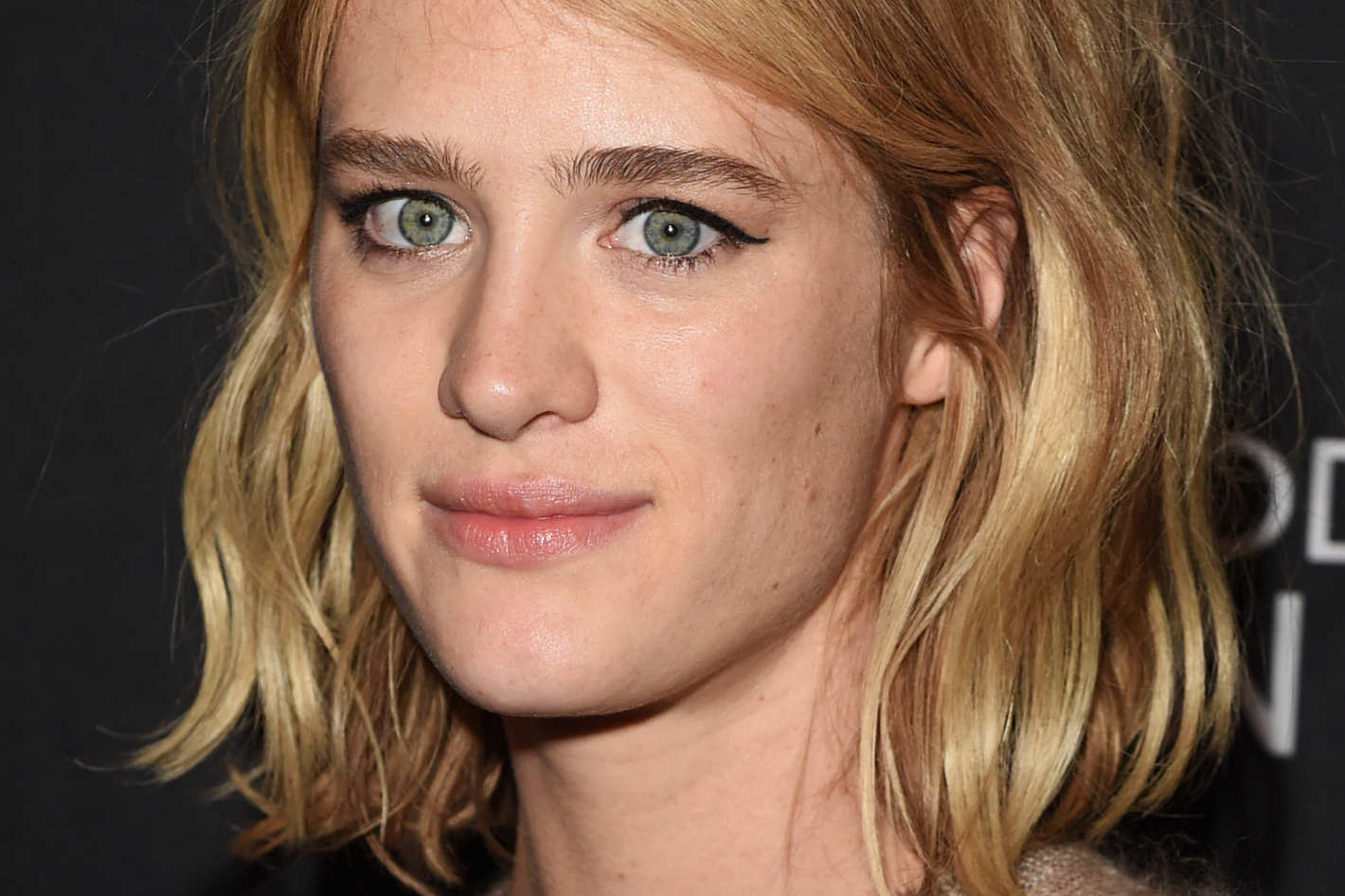
Better yet, watch female-centric movies like How to Make an American Quilt or Always Shine[9] and you’ll see plenty of feminine insecurities, passions and rivalries in contrast to cheesy man-made movies like Diabolique (1996). Hence, again, the arguments, rivalry and bickering evident in Dark Fate which resulted directly from the actresses and their input and insistence on drama and realism. Another plus point, even for a diehard romantic like me. But sadly this is the exception to the rule. Hollywood and American television have an unforgiving industrial mentality, mass producing the same thing over and over again, with a preconceived consumer base slotted out in their minds, another reason they’re losing the soft power wars alluded to above. If you watch Robert Wagner’s Prince Valiant (1954) you’ll find the Vikings are all exactly identically dressed, with the classic Viking helmet with the horns. That’s not historically accurate but more importantly, you’re going to get one Viking with a horned helmet and one without, but no, the factory churned all these things out to demand and so they all have to ‘conform’. And the movie is so lopsided the (pipsqueak) prince defeats the black knight himself, played by James Mason, almost without any effort. One size simply should not fit all and you have to be plausible when you do things.
Basically, there’s nothing remotely principled about what corporate execs are doing. Look at poor Hilary Swank, a very pretty girl that started out in soap operas, giving the heartbreaking performance of her life in Million Dollar Baby as a working girl turned female boxer, only to be ‘disappeared’ completely by the same execs that promoted her. Same goes for Juliette Lewis, a positively electric actress. Look what’s happened to Carrie-Anne Moss, consigned now to bisexual roles to take advantage of her athletic physic and strong facial curves, forgetting how talented and softly lovely she is. She suffered this during her whole career, to be honest, even during her prime when they made her out to be a washed up model or beach-going temptress, which is both disgraceful and inaccurate.
Again, have to tip my hat off to Tim Miller and the actresses of Dark Fate. No single mould should be forced on a director, however well-intentioned. Thank heavens for indie movies and the tremendous opportunities opened up by social media to cut through the power studios have over production and (more importantly) distribution. Look at the successes Always Shine (2016) and Izzy Gets the F*ck Across Town (2018), both staring Mackenzie Davis. I’d love to gaze at her like a man all day long, along with Sean Young of course, but I’ve got to work for a living in the meantime.
Oh, a recap before signing off. Did I mention that that PhD student was a very lovely girl. A liberal Iranian American in fact. And, typically for me, I fouled things up by being defensive on the issue of women’s traditional dress. Talking about hiding things from the wrong man’s gaze!!!
NOTES:
[1] I made a horrendous mistake with my review of the movie, admittedly. The version I’d downloaded cut out two of the most important scenes in the movie, including the one with Ana de Armas and Mackenzie Davis. I still didn’t like the movie or that missed scene given that it is reminiscent of the fantasy sex switchover between Uma Thurman’s character and Anaïs Nin in Henry & June (1990), substituting the Nordic blonde for the ‘Cuban’!
[2] Please see Jordan Crucchiola, “Mackenzie Davis Genuinely Can’t Find a Male Gaze in Terminator: Dark Fate”, Vulture, October 30, 2019, https://www.vulture.com/2019/10/mackenzie-davis-on-terminator-dark-fate-and-the-male-gaze.html.
[3] Please see Christina Cauterucci, “Terminator: Dark Fate Is the Gayest Terminator Yet – Director Tim Miller didn’t want his movie to be sexy. He failed.”, Slate, November 01, 2019, https://slate.com/culture/2019/11/terminator-dark-fate-lesbian-subtext-mackenzie-davis.html. As for female-domination, this can actually be counterproductive, if you’ve watched the near matriarchies on display in Cracks (2009) and Womb (2010). To understand why please see Marcia Lynx Qualey’s “Intertextuality and Underage Sex in Samar Yazbek’s ‘Cinnamon’”, Arab Literature in English Blog, February 13, 2013, https://arablit.org/2013/02/13/intertextuality-and-underage-sex-in-samar-yazbeks-cinnamon/.
[4] For a concrete example check out my first ever SF story in a printed anthology, “The Cymbals of Progress”, in Trump: Utopia or Dystopia by Dark Helix Press, http://www.darkhelixpress.com/fiction/trump-utopia-or-dystopia-anthology/.
[5] See her comments in the Jordan Crucchiola interview. I’d also wager, and I’m going out on a limb here, that Mackenzie Davis has ambitions to become a writer; she’s got my vote. Not a scriptwriter but a proper author. Her advice to director-scriptwriters feels very studied and literary. She’s also become a torchbearer, following on from fellow Canadian actress Carrie-Anne Moss, whom I’d designated in the past as the ‘cute femme fatale’.
[6] Please see her lecture “New Kings of the World: Dispatches from Bollywood, Dizi and K-Pop”, delivered at the American University in Cairo, Tahrir Campus, February 11, 2020, https://events.aucegypt.edu/?event=37326147.
[7] https://monoskop.org/images/8/8d/Arnheim_Rudolf_Film_as_Art.pdf.
[8] It’s a well attested fact that men refer to their bodies and bodily functions, even the nonsexual stuff, indirectly through euphemisms, wary of having themselves objectified in someone else’s gaze. For a nice sci-fi illustration, please check out the simuloid sequence in The Last Starfighter (1984).
[9] This is a psychodrama about two friends-rival actresses, Anna (Mackenzie Davis) and Beth (Caitlin FitzGerald). They get into a fight when it’s revealed that Beth stole a role from her, almost stealing a potential boyfriend too, and Anna kills her. She wakes up the next day and puts on Beth’s clothes and pretends to be her and is even successful getting a man, then her guilty conscience forces her to face what she’s done and she literally becomes Beth. The upshot is that Mackenzie Davis’s version of Beth is actually better, more detailed and convincing than the original. She out Bethed Beth. And I thought Always Shine was a romantic comedy!




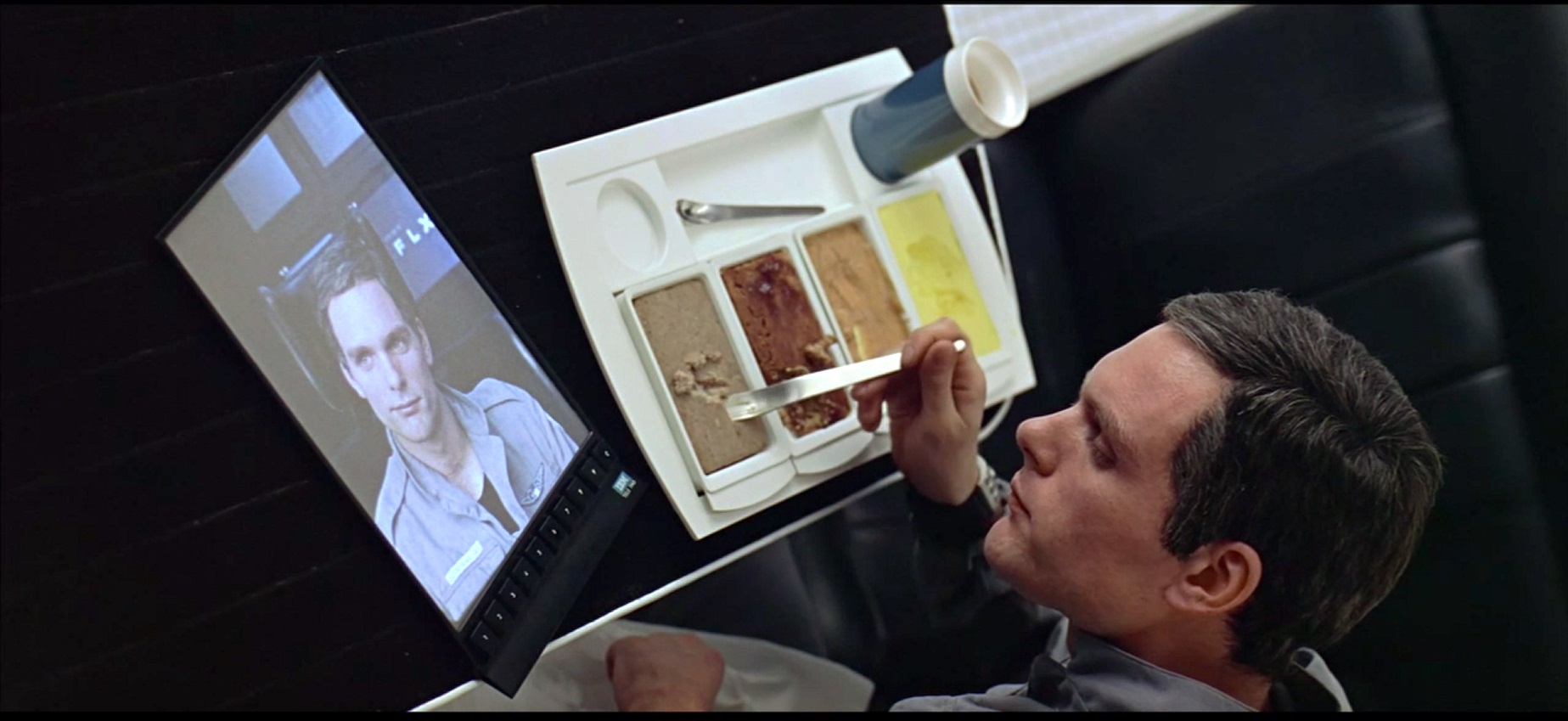


[…] for another follow-up, or set of follow-ups, after making the damnable mistake of watching Bernardo Bertolucci’s degenerate masterpiece Last […]
I don't even know the way I stopped up right here, however
I assumed this post was once great. I do not recognise who you might be but definitely you are going to a famous
blogger for those who are not already. Cheers!
[…] I still can’t figure out why they have Marisa Tomei playing Peter’s aunt but I suppose they needed someone with her feisty disposition to be a working girl that isn’t dependent on Peter while also egging him on to be the superhero he’s meant to be. A modern family but still a good, stable, wholesome family. She can take care of herself fine but there’s no harm falling in love and getting married again. One doesn’t detract from the other, something that has almost become anathema in everything from the new Star Wars trilogy to the live-action remake of Mulan to… I hate to say it, Terminator: Dark Fate. […]
[…] was also hankering to write a follow-up to my Terminator: Dark Fate article on the male gaze, given that Fatima Bhutto’s talk about the latest failures of American pop […]